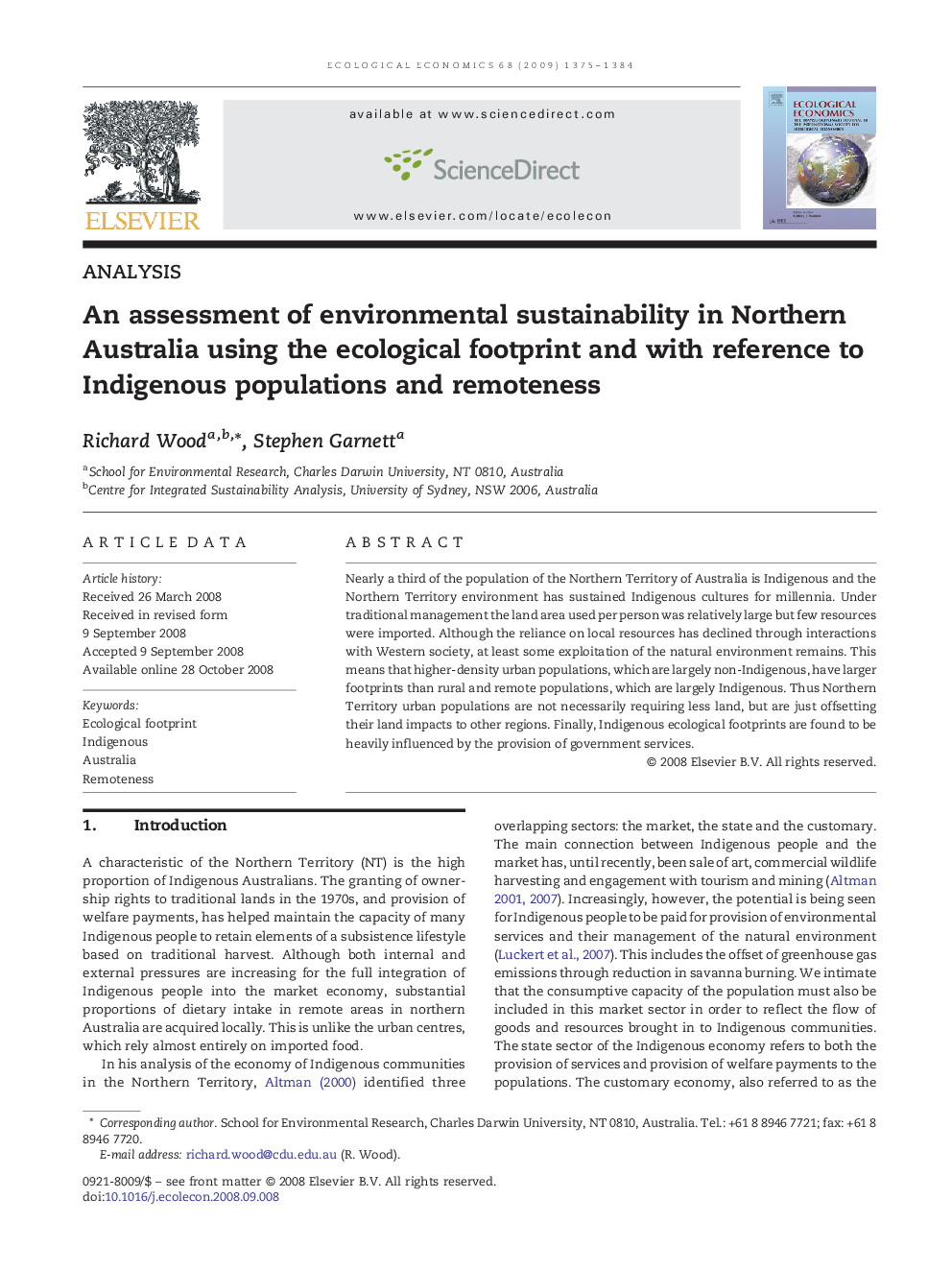| کد مقاله | کد نشریه | سال انتشار | مقاله انگلیسی | نسخه تمام متن |
|---|---|---|---|---|
| 5051511 | 1371127 | 2009 | 10 صفحه PDF | دانلود رایگان |

Nearly a third of the population of the Northern Territory of Australia is Indigenous and the Northern Territory environment has sustained Indigenous cultures for millennia. Under traditional management the land area used per person was relatively large but few resources were imported. Although the reliance on local resources has declined through interactions with Western society, at least some exploitation of the natural environment remains. This means that higher-density urban populations, which are largely non-Indigenous, have larger footprints than rural and remote populations, which are largely Indigenous. Thus Northern Territory urban populations are not necessarily requiring less land, but are just offsetting their land impacts to other regions. Finally, Indigenous ecological footprints are found to be heavily influenced by the provision of government services.
Journal: Ecological Economics - Volume 68, Issue 5, 15 March 2009, Pages 1375-1384